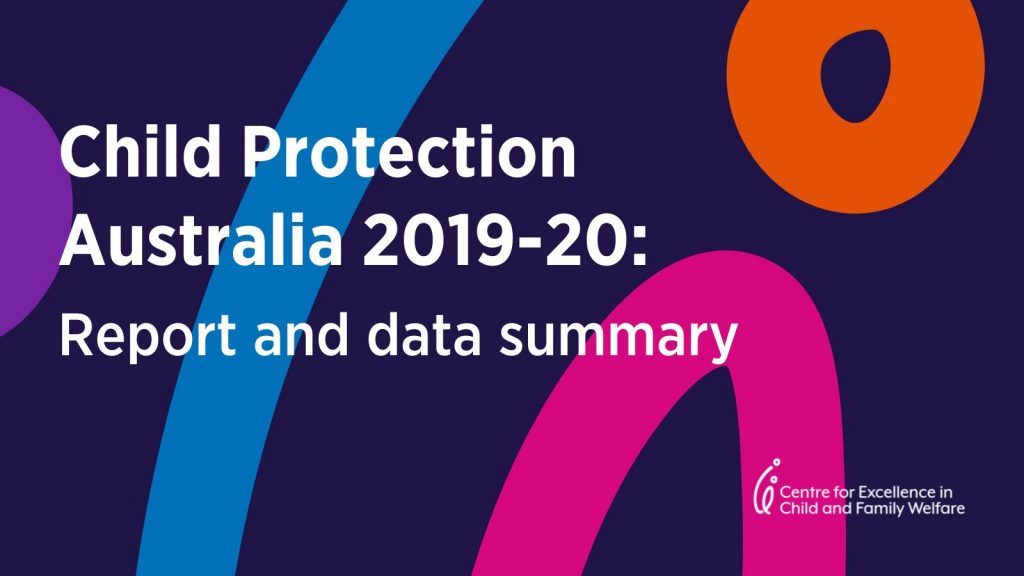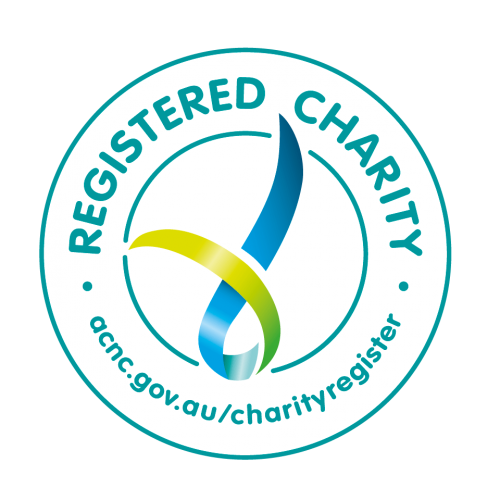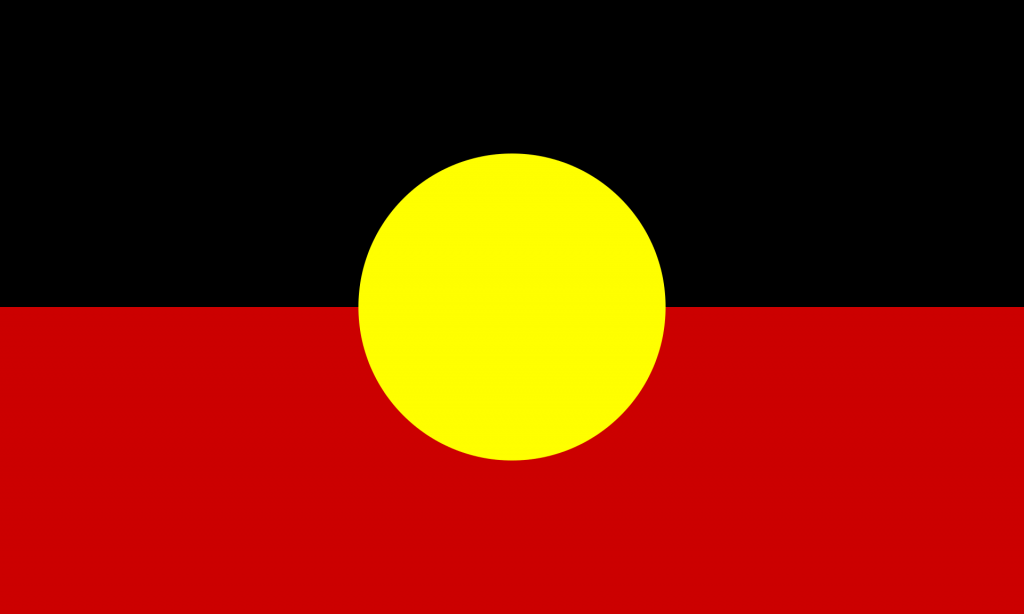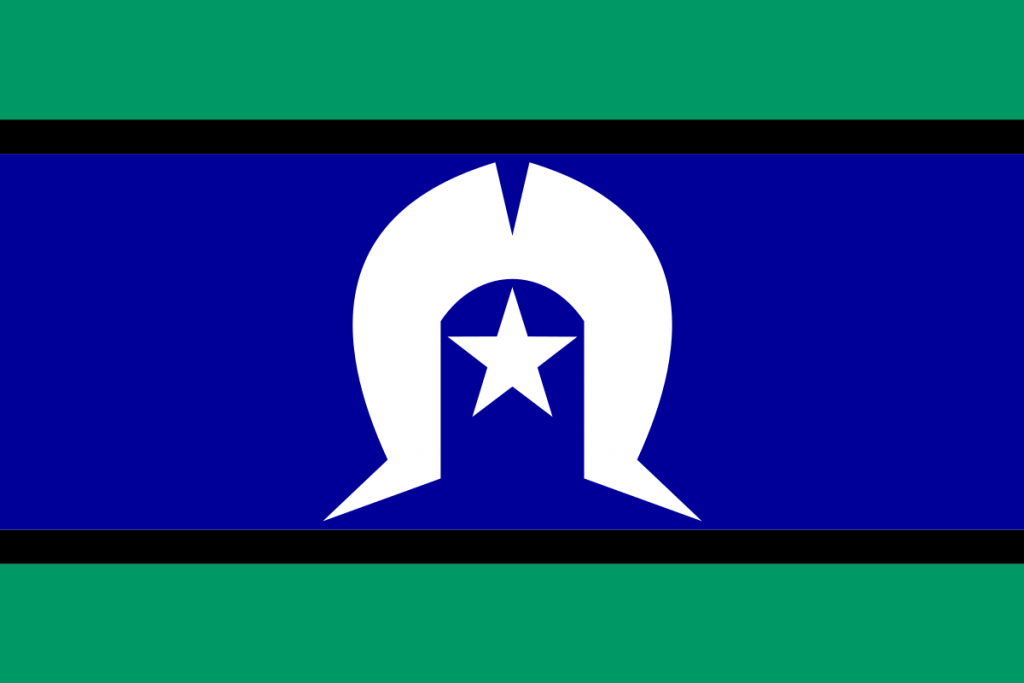A summary of the Australian Institute of Health and Welfare’s annual report outlining the latest national and state and territory data on child protection and family support services for 2019-20, and trends over the five-year period from 2015-16 to 2019-20.
National data
- 486,280 notifications were made in 2019-20 concerning 275,015 children
- 300,683 notifications were resolved without investigation (61.8 per cent of all notifications)
- A total of 147,639 investigations were finalised in 2019-20 (30.4 per cent of total notifications)
- 174,719 children (1 in 32) received child protection services in 2019-20, of which 55,301 were Indigenous (1 in 6):
- 117,940 were the subjects of an investigation (55,043 not substantiated)
- 48,886 were the subjects of substantiations, of which 14,323 were Indigenous. 12.1 per cent of children were the subject of two substantiations, 3.9 per cent were the subject of three substantiations and 4.9 per cent were the subject of four or more substantiations
- 71,983 were on a care and protection order (60,903 at 30 June 2020, of which 23,344 were Indigenous)
- 56,456 were in out-of-home care (45,996 at 30 June 2020, of which 18,862 were Indigenous)
- The rate of children receiving child protection services was about the same in 2019-20 as it was in 2016-17
- In 2019-20, the rate of Indigenous children receiving child protection services was 166 per 1000 (almost 8 times the rate for non-Indigenous children), an increase from 151 per 1000 in 2016- 17
- 67.4 per cent (over two-thirds) of children receiving child protection services were repeat clients in 2019-20
- 11,719 infants (aged under one) received child protection services in 2019-20 and were the age group most likely to receive child protection services
- 12,606 children (7.2 per cent) were involved in all three components of the system (investigation, care and protection order and out-of-home care) in 2019-20
- 100,065 (57.3 per cent) of children receiving child protection services were the subject of an investigation only, of which 88,055 were finalised in 2019-20 (36,541 substantiated, 51,514 not substantiated)
- Children from very remote areas were more than three times as likely as those from major cities to be the subjects of a substantiation
- Of children who were the subjects of substantiations:
- 1,739 were unborn (of which 777 were Indigenous)
- 4,860 were aged less than one (of which 1,628 were Indigenous)
- 11,753 were aged one to four (of which 3,766 were Indigenous)
- 13,531 were aged five to nine (of which 3,777 were Indigenous)
- 12,758 were aged ten to 14 (of which 3,307 were Indigenous)
- 4,201 were aged 15 to 17 (of which 1,056 were Indigenous)
- 44 were not stated (of which 12 were Indigenous)
- Of children who were the subjects of substantiations (by the type of abuse deemed as causing most harm):
- 6,894 experienced physical abuse
- 4,511 experienced sexual abuse
- 26,350 experienced emotional abuse
- 10,983 experienced neglect
- For 148, it was not stated
- Of children who were the subjects of substantiations, the number of children in each socioeconomic status index category (from 1 – lowest to 5 – highest) were:
- 10,911 at 1
- 7,564 at 2
- 6,711 at 3
- 4,203 at 4
- 1,852 at 5
- Of children on care and protection orders at 30 June 2020:
- 4,687 were living with their parents
- 35 were in family care with relatives/kin
- 16,843 were living in foster care (27.7 per cent)
- 21,686 were in home-based care with relatives/kin (35.6 per cent)
- 2,970 were living in other home-based care
- 6,471 were in third-party parental care
- 2,925 were living in residential care (4.8 per cent)
- 144 were living in family group homes – 252 were in independent living
- 4,788 were other/unknown
- The rate of children in out-of-home care between 2017 and 2020 was relatively steady at 8 per 1,000 children
- 1 in 18 Indigenous children were in out-of-home care at 30 June 2020, 11 times the rate for non-Indigenous children
- 12,345 children were admitted to out-of-home care in 2019-20, of which 4,588 were Indigenous
- 11,227 children were discharged from out-of-home care in 2019-20, of which 3,894 were Indigenous
- 6,423 children exited out-of-home care to a permanency outcome in 2018-19, however 884 of these children returned (13.8 per cent)
- Of children in out-of-home care at 30 June 2020:
- 17,155 were in foster care (37.3 per cent)
- 24,646 were living with relatives/kin (53.6 per cent)
- 584 were in other home-based care
- 159 were in family group homes
- 3,032 were in residential care (6.6 per cent)
- 183 were in independent living
- 234 were other/unknown
- 63.3 per cent of Indigenous children were placed with relatives/kin or other Indigenous caregivers
- In 2019-20, there were 162 known-carer adoptions from out-of-home care
- Of children in relative/kinship placements at 30 June 2020 (excluding WA, NT, NSW and SA):
- 4,940 were living with a grandparent (20 per cent)
- 2,053 were living with an aunt/uncle (8.3 per cent)
- 240 were living with a sibling (1 per cent)
- 614 were living with another relative (2.5 per cent)
- 766 were living with someone with a non-familial relationship to the child (3.1 per cent)
- 9 were living with someone with another Indigenous kinship relationship to the child
- 11 were living with someone classified as other
- 16,013 were not stated (65 per cent)
- 6,424 children in out-of-home care at 30 June 2020 had a disability (15.3 per cent) and for 15,593 children (37.3 per cent) their disability status was not stated
- 30,604 children had been in out-of-home care for two years or more at 30 June 2020
- 2,098 households commenced foster care and 1,558 households exited foster care (excludes NSW exit data and respite placements)
- 6,955 households commenced relative/kinship care and 4,500 households exited relative/kinship care (excludes NSW exit data and respite placements)
- 5,338 children in out-of-home care were reunified with their family in 2019-20, of which 1,567 were Indigenous. Reunification rates are lower for Indigenous children (at 15 per cent), than non-Indigenous children (at 21 per cent)
- Of the 5,280 children who exited out-of-home care to reunification in 2018-19, 882 children (16.7 per cent) returned to out-of-home care
- 461 intensive family support service providers delivered services in 2019-20 across 425 locations (excluding Northern Territory)
- 40,159 children commenced intensive family support services, of which:
- 14,587 were aged 0-4 years (36.3 per cent)
- 11,657 were aged 5-9 years (29 per cent)
- 9,592 were aged 10-14 years (23.9 per cent)
- 3,091 were aged 15-17 years (7.7 per cent)
- 1,232 were of unknown age (3.1 per cent)
Victorian data
- 121,739 notifications were made in 2019-20
- 87,381 notifications were resolved without investigation (71.8 per cent of all notifications)
- A total of 33,783 investigations were finalised in 2019-20
- 45,686 children received child protection services in Victoria in 2019-20:
- 30,420 were the subject of an investigation (13,285 not substantiated)
- 16,714 were the subject of substantiations, of which 2,341 were Indigenous. 6.1 per cent of children were the subject of two substantiations and 0.3 per cent were the subject of three substantiations
- 19,503 were on care and protection orders (14,947 at 30 June 2020, of which 3,451 were Indigenous)
- 12,728 were in out-of-home care (9,095 at 30 June 2020, of which 2,450 were Indigenous)
- The rate of children receiving child protection services increased slightly from 29.5 per 1000 in 2016-17 to 31.9 per 1000 in 2019-20
- 73.8 per cent of children receiving child protection services were repeat clients in 2019-20
- 2,689 (5.9 per cent) of children receiving child protection services were involved in all three components of the system in 2019-20 (investigation, care and protection order and out-of-home care)
- 24,677 children were subject to an investigation only, of which 24,289 were finalised in 2019- 20 (11,627 substantiated and 12,662 not substantiated)
- 30.3 per cent of children with a substantiation in 2018-19 were placed on a care and protection order within 12 months
- Of children who were the subjects of substantiations:
- 0 were unborn
- 2,007 were aged less than 1 (of which 397 were Indigenous)
- 4,068 were aged 1-4 years (of which 644 were Indigenous)
- 4,830 were aged 5-9 years (of which 631 were Indigenous)
- 4,447 were aged 10-14 years (of which 517 were Indigenous)
- 1,362 were aged 15-17 years (of which 152 were Indignous)
- Of children who were subjects of substantiations (by the type of abuse deemed as causing most harm):
- 2,186 experienced physical abuse
- 1,026 experienced sexual abuse
- 12,872 experienced emotional abuse
- 629 experienced neglect
- For 1, it was not stated
- Of children on care and protection orders at 30 June 2020:
- 3,550 were living with their parents (23.8 per cent)
- 1,609 were living in foster care (10.8 per cent)
- 5,691 were living in home-based care with relatives/kin (38.1 per cent)
- 54 were in other home-based care
- 2,810 were in third-party parental care (18.8 per cent)
- 427 were in residential care (2.9 per cent)
- 41 were in independent living
- 765 were other/unknown
- 4,376 children were admitted to out-of-home care in 2019-20, of which 971 were Indigenous
- 3,881 children were discharged from out-of-home care in 2019-20, of which 783 were Indigenous
- Of children in out-of-home care at 30 June 2020:
- 349 were aged less than 1, of which 94 were Indigenous
- 2,098 were aged 1-4 years, of which 596 were Indigenous
- 2,596 were aged 5-9 years, of which 761 were Indigenous
- 2,558 were aged 10-14 years, of which 652 were Indigenous
- 1,494 were aged 15-17 years, of which 347 were Indigenous
- Of children in out-of-home care at 30 June 2020:
- 1,620 were living in foster care (17.8 per cent)
- 6,817 were living with relatives/kin (75 per cent)
- 183 were in other home-based care
- 429 were living in residential care (4.7 per cent)
- 41 were in independent living
- 5 were other/unknown
- At 30 June 2020, 35.9 per cent of children aged 10-14 years and 58.5 per cent of children aged 15-17 years in out-of-home care lived in residential care (including family group homes)
- 79.1 per cent of Indigenous children were placed with relatives/kin or other Indigenous caregivers
- 1,012 children in out-of-home care at 30 June 2020 had a disability (11.1 per cent) and for 2,549 children (28 per cent) their disability status was not stated
- 4,356 children had been in out-of-home care for two years or more at 30 June 2020
- 354 households commenced foster care and 596 households exited foster care (excludes respite placements)
- 3,223 households commenced relative/kinship care and 2,972 households exited relative/kinship care (excludes respite placements)
- Of relative/kinship care households with a placement at 30 June 2020:
- 3,161 had one child
- 980 had two children
- 457 had three to four children
- 41 had five or more children
- Of foster care households with a placement at 30 June 2020
- 602 had one child
- 289 had two children
- 127 had three to four children
- 6 had five or more children
- 12,990 children commenced intensive family support services of which:
- 4,472 were aged zero to four (34.4 per cent)
- 3,664 were aged five to nine (28.2 per cent)
- 3,505 were aged ten to 14 (27 per cent)
- 1,349 were aged 15 to 17 (10.4 per cent)
- 85.1 per cent of children commencing intensive family support services were living with their parents
Data in this summary is largely included verbatim from the report and the data tables. Please interpret with care.
A child is aged 0-17 unless otherwise stated.






